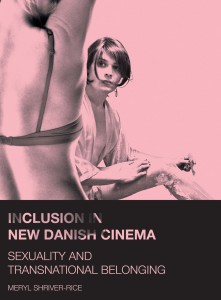Inclusion in New Danish Cinema
Sexuality and Transnational Belonging


Average rating: ![]()
| 0 | rating | |
| 0 | rating | |
| 0 | rating | |
| 0 | rating |
Your rating: -
Book Presentation:
Often recognized as one of the happiest countries in the world, Denmark, like its Scandinavian neighbors, is known for its progressive culture, which is also reflected in its national cinema. It is not surprising, then, that Danish film boasts as many successful women film directors as men, uses scripts that are often cowritten by the director and the screenwriter, and produces one of the largest numbers of queer films directed by and starring women. Despite all this, Danish film is not widely written about, especially in English. Inclusion in New Danish Cinema brings this vibrant culture to English-language audiences. Meryl Shriver-Rice argues that Denmark has demonstrated that film can reinforce cultural ethics and political values while also navigating the ongoing and mounting forces of digital communication and globalization.
See the publisher website: Intellect Books
> From the same author:
The Films of Susanne Bier (2018)
Dir. Missy Molloy, Mimi Nielsen and Meryl Shriver-Rice
Subject: Director > Susanne Bier
> On a related topic:
Queering Contemporary French Popular Cinema (2009)
Images and Their Reception
Celluloid Comrades (2006)
Representations of Male Homosexuality in Contemporary Chinese Cinemas
The New Queer Gothic (2024)
Reading Queer Girls and Women in Contemporary Fiction and Film
by Robyn Ollett
Subject: Sociology